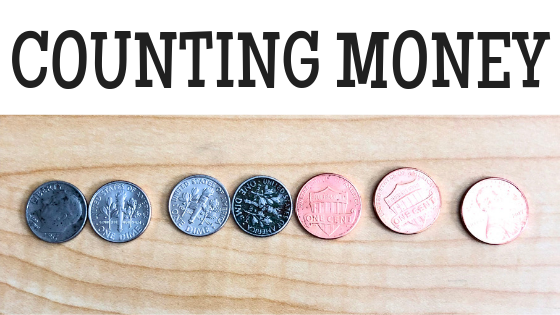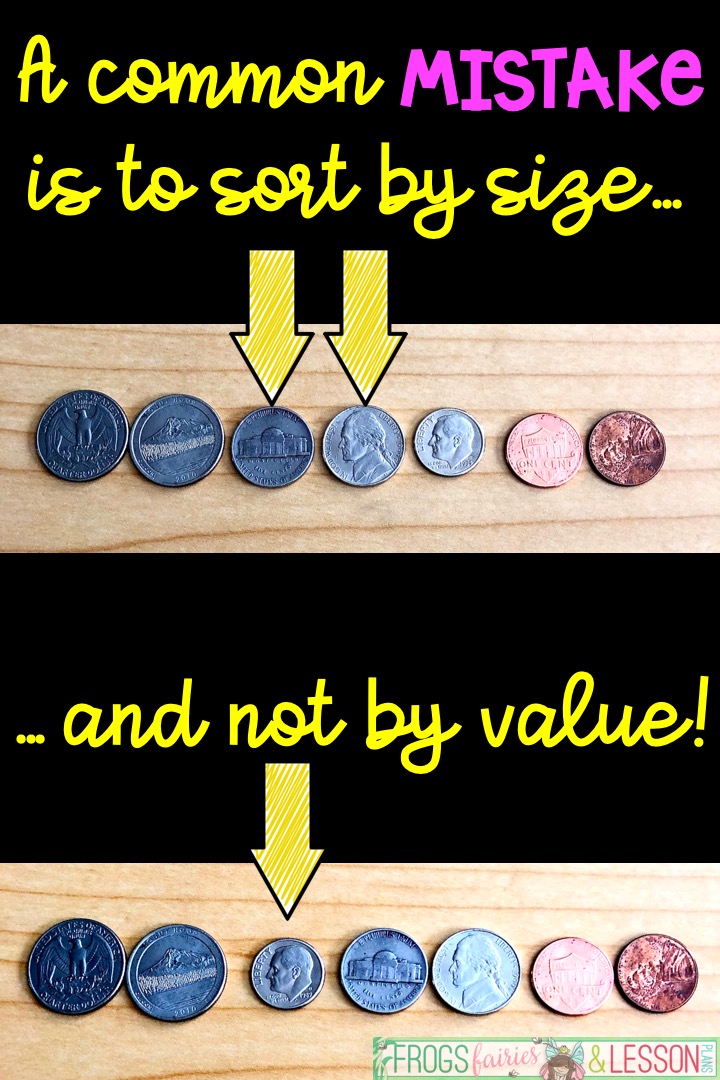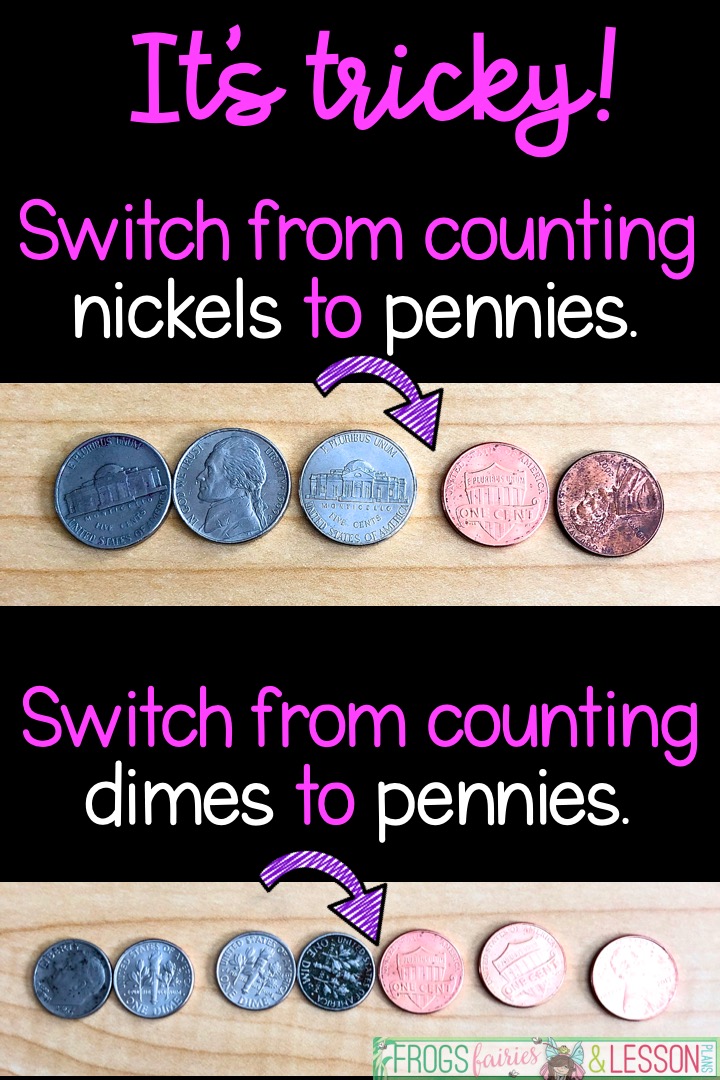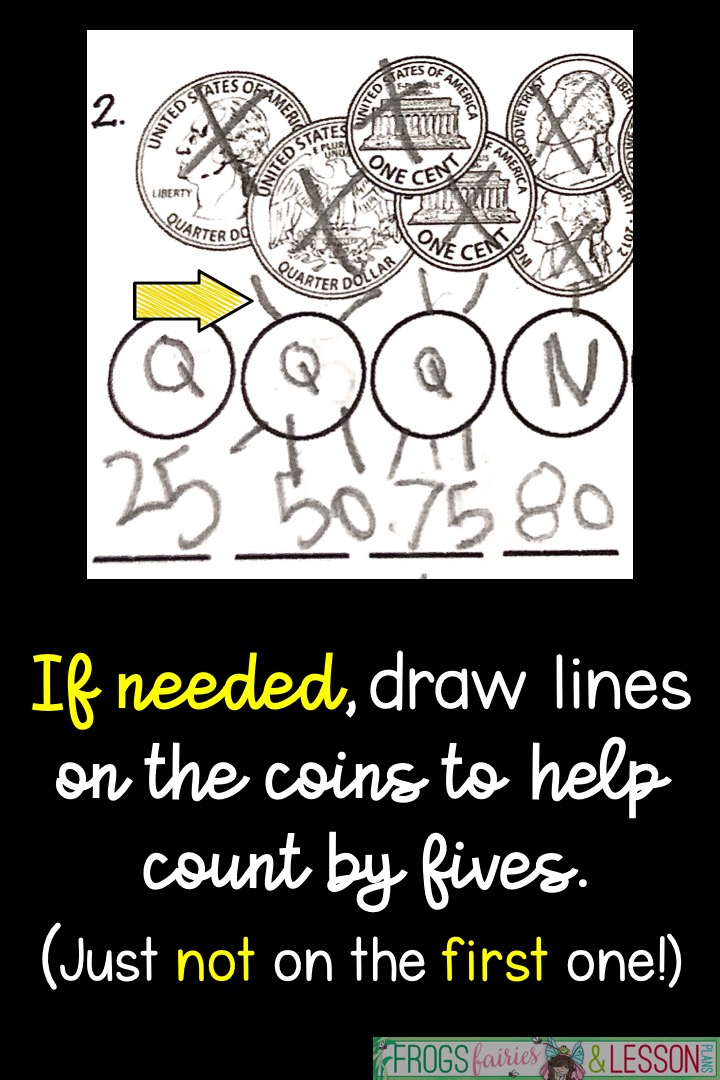From identifying coins and knowing their value, to knowing which coin to start counting with, the journey to knowing how to count money can be challenging to some of our students.
Here are some very basic things that I’ve done to help a student I tutored.

1. Sort the same coins into piles.
Sorting and naming the coins is the first basic step. If you can use real coins, do it!
This might be too easy for some, but for those having trouble recognizing coins or those who haven’t been exposed to coins, this is a great place to start.

2. Sort coins in a line from greatest value to smallest value.
The next thing to do is to learn the value of each coin, and to start sorting them from biggest value (quarter) to lowest value (pennie).
The most frequent challenge here is understanding that even though the nickel has a larger size than a dime, it is the dime that has a bigger value.

3. Count coins of the same value.
For this activity, I gave Sophia several pennies, then nickels, then dimes, and last quarters. She practiced counting each set of same value coins. We moved back and forth from different sets.

4. Count coins of different values.
I broke this lesson down very carefully not to overwhelm Sophia.
We started out by mixing 2 coins, one of them being pennies.
Next, mixing three coins, and so on.

It’s important to teach kids to order the coins from greatest to smallest value, and to count the money in that order.
After we did that with real coins, Sophia practiced doing it on paper.
 |
| Sophia crossed out each coin in order as she wrote their initials in the circles provided. |
Although Sophia was able to count by ones, fives, tens, and twenty-fives in isolation, this skill did not transfer when we started mixing various coins. To make it more manageable, I taught her to draw little hairs on the coins.
Each line represents “five”. So a nickel get 1 line, a dime gets 2, and a quarter gets 5. Once all the coins have their lines, all she needs to do is go down the line counting by fives, remembering to count by ones when there are pennies in the set.

Once she became comfortable with the process, I asked her to simply write down the value of the first coins without counting.
The goal is to move away from the lines altogether, but for now, this is how she can manage.
 |
5. Count bills and coins.
After Sophia was confident in her coin counting ability, I added $1.00 bills to the pile.

6. Solve word problems involving money.
A helpful approach is to draw the money in the problem. By having the visual cues students can manipulate the information more easily.



I hope these steps come in handy if you ever need to use them.
Feel free to email me at frogsfairiesandlessonplans@gmail.com with any questions. I’m always glad to hear from you!
If you want to keep this information fresh all year you can assign homework that constantly reviews learned skills. This is the homework I have in case you are interested. It’s 100% Common Core aligned! There is a FREE SAMPLE available for each packet when you check the resource pages.
 |
| 1st Grade Math Homework |
 |
| 2nd Grade Math Homework |
 |
| 3rd Grade Math Homework |